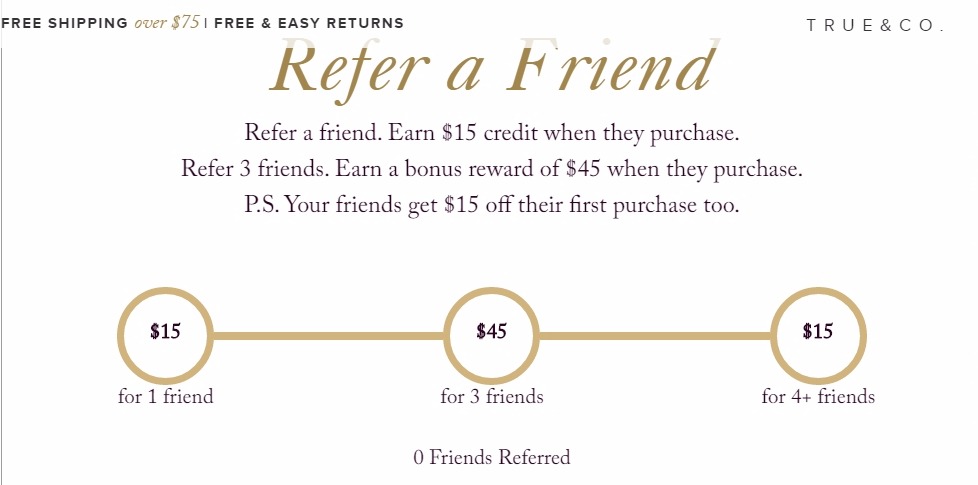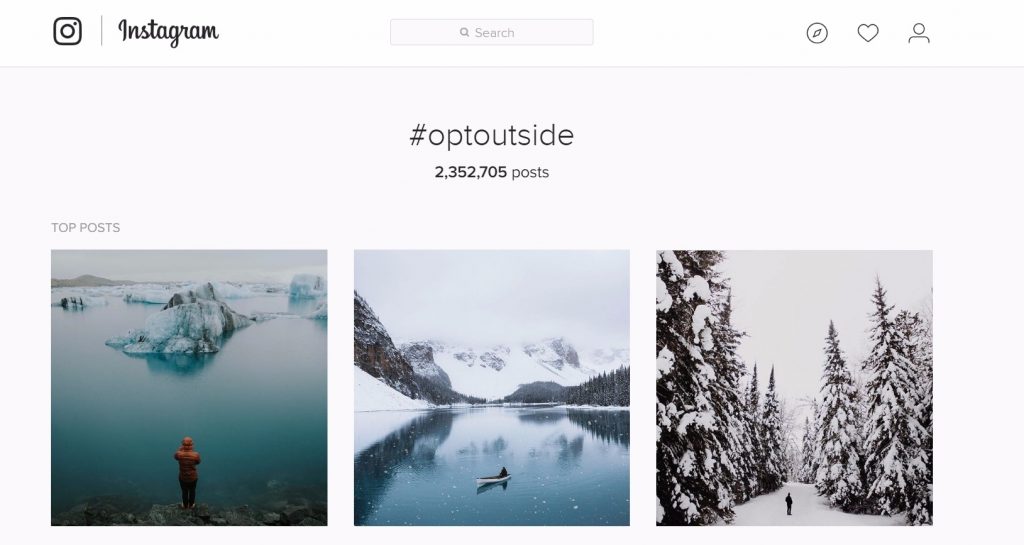How to Create a Killer Customer Loyalty Program

CRMRetail loyalty programs have evolved far beyond stamp cards.
These days, the majority of consumers believe loyalty programs are a big part of their relationship with a retailer–and about 64% of retailers agree.
However, one study showed that while most American households are apart of about 29 loyalty programs, they only really use 12 of them. And then there’s this sobering statistic: “77% of transaction-based programs fail in the first year.”
What’s the secret to creating a customer loyalty program that’s one of the coveted 12?
We consulted Eliza Fisher, who recently contributed to our post on Retail Trends & Predictions for 2017. Fisher works at Social Annex, a company that specializes in customer loyalty and advocate marketing solutions, including referral programs and user-generated content.
Read on to get the keys to creating a loyalty program that sticks.
Some people will join your loyalty program because they’re looking for discounts on purchases they probably wouldn’t have made.
Others join because they’re already loyal customers, and they’re excited to get discounts on purchases they’re already making.
Either way, a lot of retailers might think of a transaction-based loyalty program as a budget sink.
And it can be if you’re not careful.
 “Loyalty programs that only offer straightforward discounting and points for purchases aren’t as successful as other brands that motivate customers to continue to earn points by being engaging and communicative, or ones that encourage shoppers to take advocate marketing actions in exchange for points,” says Fisher.
“Loyalty programs that only offer straightforward discounting and points for purchases aren’t as successful as other brands that motivate customers to continue to earn points by being engaging and communicative, or ones that encourage shoppers to take advocate marketing actions in exchange for points,” says Fisher.
The key, according to Fisher, is to see the loyalty program as more than a standalone program, and to use it as an additional avenue to build a relationship with customers.
“Build a rapport by communicating with your [members] frequently so you can build something that’s more than just the discounts and the savings, and more about their identity with their brand,” says Fisher.
Eventually, this could turn loyalty program members into your own brand advocates.
At the end of the day, this concept isn’t complicated–customers who love your brand will naturally want to spread the word amongst their friends and family.
So social advocacy requires two things to work: People who are obsessed with your brand + a way to spread the word. To make it really work, retailers can reward their raving fans.
“At Social Annex, we see clients implement loyalty programs that reward customers for taking advocacy steps–referring friends, writing product reviews, sharing photos on Instagram, connecting with and following them on social–and that makes customers much more engaged.”
 How much more engaged?
How much more engaged?
“Some clients who transitioned from a straightforward points-for-purchase program to one that includes social actions have seen their loyalty program revenue increase by +300% within a year.”
Another Social Annex client saw monthly orders grow by +38% and their email list grow by +20% largely due to their referral program, which they promoted on their site’s front page. (More on that later.)
Of course, in order to see numbers like that, customers need a reason to like you and to advocate for you–and a loyalty program in itself can’t create that.
Nudge them in the right direction by rewarding them for taking action. And one of the best places to do that? On social.
If you think about it, Social sharing wasn’t really an option 10 years ago.
“In this past decade, we’ve seen brand engagement pop up in so many new places. Say you have a huge base on Instagram–you can spin that into loyalty,” says Fisher. “It depends on your customer base and the types of products you sell.”
Nearly everyone can see success with a loyalty program, according to Fisher. But if you have a younger audience or you sell the types of products people tend to talk about more online–for example beauty products and consumer electronics–then you may have a leg up.
Customer loyalty programs aren’t one-size-fits-all, but there are a few best practices we can all keep in mind, straight from Fisher herself. How many of these are you doing?
“We do this for almost every client we run loyalty programs for, and it’s really like a three-sided win,” says Fisher. “You’re either gaining a new customer or at least tapping into a highly qualified potential customer, your current customer is rewarded for being loyal and spreading the word, and your new customer is getting the discount, which increases purchase likelihood.”

“A fair amount of companies don’t really advertise their referral program very much,” says Fisher. “It’s pretty uncommon as a consumer to see any social posts about a referral program, or marketing emails. The best practice would be to promote it on social and mention in posts and a few marketing emails. It will set you apart.”
This goes for both the program itself and the method by which you reward customers.
“We have a client that’s basically Groupon for spas, and they give customers points for checking in on Foursquare, which makes sense because their business model is brick and mortar,” says Fisher.
“Loyalty and referral programs are never one-size-fits-all. It’s always a good idea to look at your customer base and see where they are, and meet them there.”
This also means the promotional messaging you use–particularly hashtags–are crucial. Take for instance REI’s #OptOutside campaign, which has over 2 million brand and user contributions on Instagram:

The tagline fits right in with REI’s experience-centric values. Other times, though, hashtags don’t work quite this well. Here’s an example from Fisher’s experience:
“At SocialAnnex, we have a solution called Visual Commerce that lets clients automatically source images from Instagram and a few other programs, and use them on their site and configure them in shoppable dynamic galleries. We pull these from Instagram via hashtags, so brands need to launch hashtag campaigns to get their customers to contribute photos.
Sometimes, if the company has a common name, it will take a lot of effort to come up with the right hashtag–and for specific recognizable names, it’s really easy to create hashtags (e.g., #bedbathandbeyond).
If your company name is more generic, it’s harder. We worked with one company that was using a hashtag that an escort service was using as well. In their dashboard, they were getting images totally unrelated to their products.”
If you have brick and mortar stores and a great online presence, you don’t have to stick to one form of rewards.
“One company gave customers the opportunity to exchange earned points for a haircut at one of their flagship salons. That’s a really cool way to merge ecommerce with brick and mortar salon experience. And for their customer base, that works really well.”
“Test your rewards on a seasonal basis,” says Eliza. “Customers get bored.”
Think about the last time a big department store revamped their customer loyalty program–it doesn’t happen often, but it can make or break your program’s engagement.
As we said before, cards may work for some brick and mortar mom and pops, but for today’s omnichannel retailers, there are better ways. There’s another reason to digitize, says Fisher:
“If you’re doing an omnichannel program where a customer might buy in store one week and online one week later, link everything to email makes sure all the data’s in one place.”
So you’ve done the hard work of optimizing your loyalty program. How do you know how well it’s working, aside from basic ROI?
There are plenty of different metrics, and it depends on your goals. Here’s what Fisher recommends:
Again, it’s important to measure what you value–and it’s completely dependent on your goals as a company. But this is a great starting place to keep track of your program engagement.
There are plenty of ways to take your customer loyalty program to the next level, especially if you’re using email to keep track of members.
Read this post for a few ways you can market to your list of members (beyond email blasts):
https://tinuiti.com/blog/2016/09/crm-data-increase-sales/
Social Annex is working on perfecting an enhanced segmentation dash, so you can segment your customers by purchase recency, frequency, AOV, and combine that with loyalty and advocate marketing data to get a comprehensive look at what they’re doing.
“If a business wanted to create a list of customers that are in their loyalty program, have between 200-300 points purchased at their downtown Manhattan location in October, bought their most popular fuzzy sweater, and recently wrote a review–they could make that list,” says Fisher. “You can make highly targeted lists and reach out to customers and personalize marketing efforts on a deeper level.”
How’s your customer loyalty program performing? What methods do you use to keep members engaged? Let us know in the comments!
